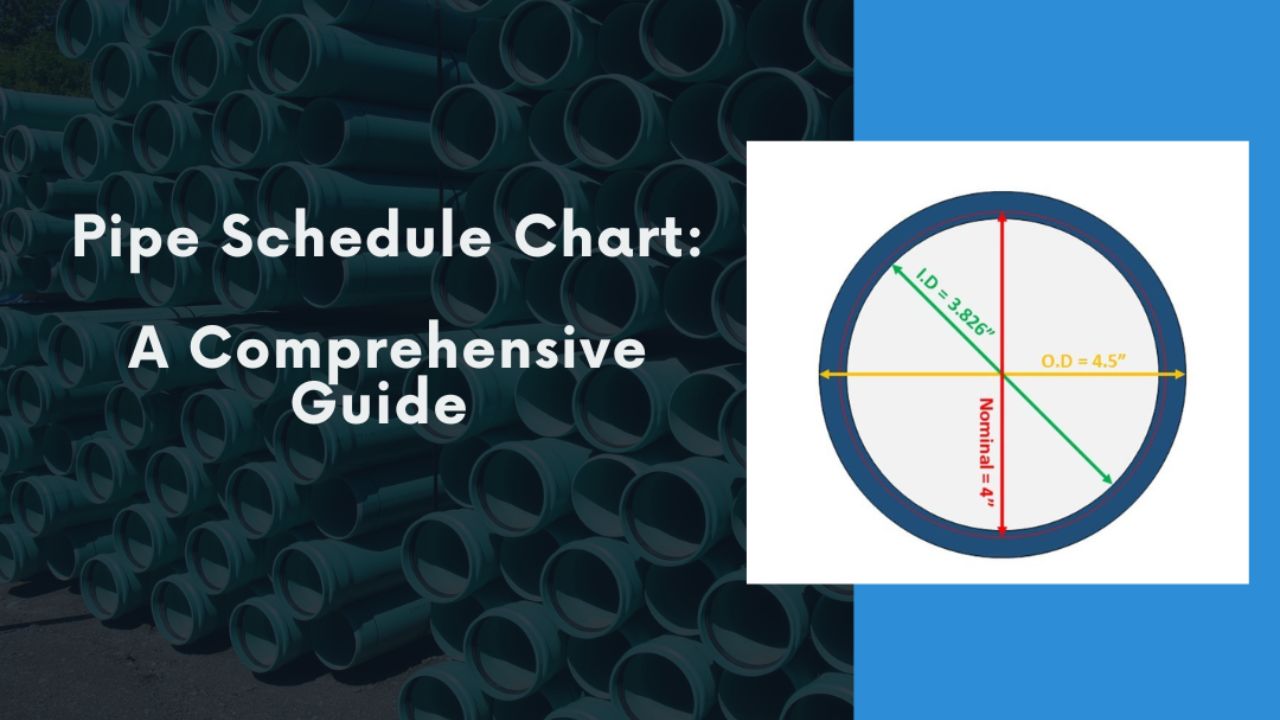When it comes to the world of piping systems, knowledge of the pipe dimensions is a key to providing safety, durability, and functionality. The Pipe Schedule Chart is one of the technical aspects that engineers, manufacturers, and contractors use among many others. To a novice in the piping industry or a person who is just hearing the term, it is confusing to understand a pipe schedule chart. Nevertheless, it is very important in the choice of the right pipe to be used in different applications within the construction, oil and gas, water transportation, and industrial environments.
What is Pipe Schedule?
The wall thickness of a pipe is called the pipe schedule. It is a standard measure that is created by the American National Standards Institute (ANSI) to indicate the thickness relative to the nominal pipe size (NPS). Pipe schedule does not refer to pressure capacity or size of a pipe, as some people may be tempted to think; it refers to the ratio between inner and outer diameter of a pipe, as well as the pressure capacity of the pipe.
These schedules show various thicknesses of a wall of a given size of pipe. The larger the wall, the greater the schedule number; therefore, the inside diameter is smaller, and the pressure capacity increases.
Value of the Pipe Schedule Charts
The pipe schedule chart is a table of the nominal pipe sizes and their respective wall thickness and outer diameter, and other important measurements. It is a handy guide to the proper choice of the pipe according to the requirements of the project in terms of its mechanics and operation.
This graph is of specific use in the design of pressurized systems, wherein the wall thickness can directly influence the safety and performance of the systems. As an example, the pipes in high-thermal-pressure steam may be thick to resist pressure inside without being deformed or ruptured. In this scenario, it is good to refer to a pipe schedule chart to make sure that the chosen pipe is fit the required pressure ratings.
Learning about the Nominal Pipe Size and Dimensions
Before correctly reading and interpreting a pipe schedule chart, the concept of nominal pipe size (NPS) should be known. NPS is a standardised pipe diameter designation not always equal to the real outside diameter of the pipe. As an example, a 2-inch nominal size pipe is really an 2.375-inch outside diameter size. The difference will be more pronounced in bigger sizes.
This thickness of the walls that is in the schedule chart along with the already known outer diameter enables engineers to estimate the inner diameter. The calculation is significant in estimating the flow capacity of a pipe and compatibility of fittings and valves.
Ordinary Schedule Numbers and Uses of Items
The commonest types of pipe schedules are Schedule 40 and Schedule 80. Schedule 40 is regarded as standard weight and is usually applied in residential, commercial and light industrial applications. The thicker schedule 80 is preferred in more harsh circumstances with higher pressures or abrasive substances.
Some schedules include SCH 10 or SCH 160, which are designed to serve particular industries. The SCH 10 pipes are light and mostly applied in the low-pressure water systems, whereas the SCH 160 pipes are very thick and are applied in high-stress places such as oil refineries and chemical plants.
Pipe Schedule Charts in Use by Manufacturers
Producers of steel pipes such as PandaPipe use the schedule charts of pipes in order to manufacture pipes according to the standards adopted in other countries which include the ASTM, API, JIS, and EN. They match production with standardized schedule data and thus every pipe made has the mechanical strength and the dimensional perfection needed by various industries. Moreover, the charts can enable manufacturers to develop product guides that engineers and procurement teams can use when choosing the appropriate materials to be used in their projects.
The Reason You Need to Learn Pipe Scheduling Early
To every one new to piping, it is an important step to have a good grasp of the concept of pipe scheduling. Misinterpretation of pipe dimensions may have fatal impacts such as system failure, leakages or safety risks. A thin pipe may break in pressure or a thick one may be excessively costly and may be hard to fit.
Reading and operating a pipe schedule chart can be learned to avoid costly errors, make material selection easier, and communication with suppliers and engineers more efficient. These charts are usually presented at the early stages of educational programs and technical training as one of the major concepts.
Conclusion
A pipe schedule chart is so much more than a basic reference list; it is a cornerstone device that guarantees the appropriate selection of piping systems, their safety, and functionality. With this knowledge, a novice can be able to select the most appropriate pipes to use in their projects with a lot of assurance. With the ever-changing piping industry that has more demands and more rigid requirements, the fact that one must learn to master schedule charts remains the same.

